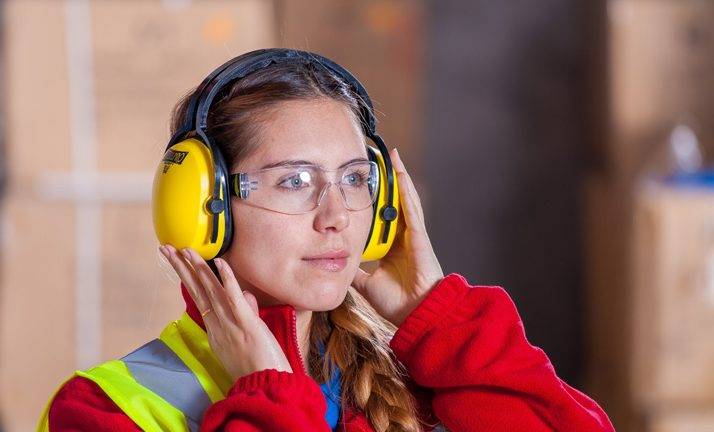The Department of Mines, Industry Regulation and Safety have recently released Mines Safety Inspection Bulletin Number 153 which on the subject of “Preventing noise-induced hearing loss in WA mines”
Background
Analysis of noise exposure data submitted to the Safety Regulation System (SRS) shows that a large percentage of mine workers are regularly exposed to noise levels that could cause permanent and debilitating damage (see graph below). There is a notable trend towards overreliance by employers on personal protective equipment (PPE) in place of engineering or administrative controls of noise hazards. Worryingly, exposure-monitoring data also show that workers in noisy conditions often neglect to use PPE.

Distribution of daily noise exposure measurements submitted through SRS 17 May 2017 – 23 April 2018.
Summary of hazard
The measurement used to quantify noise exposure is the LAeq8h, which is indicative of the total amount of noise energy that the ear absorbs over an 8 hour period.
Based on recent exposure monitoring data, areas of significant concern are:
- 61 % of all noise exposure measurements for mine workers exceeded 85 dBA
- in more than 35% of the noise exposures exceeding 85 dBA, the worker was not using PPE.
Failure to use hearing protection is consistent across all ages and occupations, including workers in management and supervisory role.
The severe or repeated stress associated with noise exposure (including occupational) causes permanent damage to neural tissue in the inner ear, leading to hearing loss. Hearing loss can impair communication and is associated with an acceleration of cognitive ageing and increased risk of dementia. As neural tissue cannot regrow once it is lost, there is limited scope for recovery once the consequences of noise exposure become detectable. Therefore, control of noise emissions at source and avoidance of exposure are critical to hearing conservation.
Contributory factors
Hearing protection devices only protect workers from harm if they fit well and are used correctly.
Of those workers whose noise exposure measurements exceeded 85 dBA:
- 99.9% had been provided with hearing protection devices
- 75.1% had been informed of the risks associated with noise hazards.
However, current hearing protection programs are not effective in protecting workers as:
- only 55.2% were wearing hearing protection when the excessive noise level was measured
- only 56.2% had been fit-tested and provided with adequate training to ensure that hearing protection was effective.
Actions required
To reduce the risk of noise exposure to workers, confirm systems are in place to identify noise hazards and make sure controls are effective.
The following actions are recommended:
- develop and implement noise control plans informed by noise reports (as per Regulation 7.10 of the Mines Safety and Inspection Regulations 1995)
- implement engineering and administrative
- noise controls use noise dosimetry to validate
- that controls are effective
- provide information, training and regular testing to ensure PPE fits well and is used
- correctly confirm all staff are aware of the risks of noise hazards
- carry out regular hearing tests to detect early stages of hearing loss to reduce ongoing excessive exposures.
OHMS Hygiene Assistance
OHMS Hygiene provided the following services to assist our clients protect their workforce and assist in achieving regulatory compliance
- provide DMIRS Approved Noise Officers to conduct noise reports which comply with Regulation 7.10 of the Mines Safety and Inspection Regulations 1995
- advise on the development and implementation of noise control plans.
- conduct noise dosimetry to validate that controls are effective
- provide advice on engineering and administrative noise controls
- conduct noise dosimetry to validate that controls are effective
- provide information, training and regular testing to ensure PPE fits well and is used correctly confirm all staff are aware of the risks of noise hazards
Further information
- Department of Mines, Industry Regulation and Safety, www.dmirs.wa.gov.au/ResourcesSafety
Guidance about noise management and hearing conservation (web page) - WorkCover WA, www.workcover.wa.gov.au/
Hearing loss (web page)


